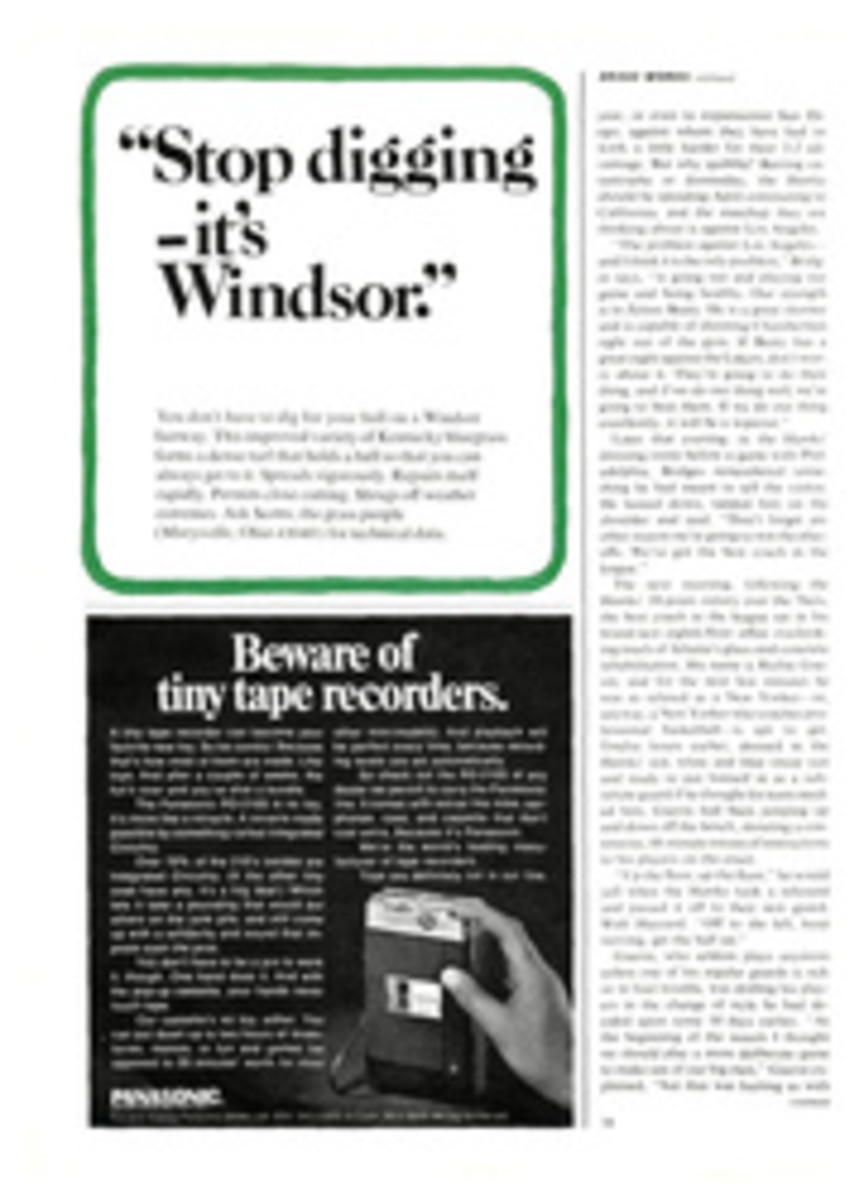
'The real freaks don't go out in winter'
Needless to say, spring is here. But the snow still lies thickly above the tide line on the New England beaches from Maine to Rhode Island. Last week it was 10° in Portland, Me., 13° in Rye, N.H. and 24° in Hull, Mass., and offshore a handful of surfers bobbed on their boards in their black rubber wet suits like strange, awkward seals.
In Hawaii and Florida and South Africa, the summer is, indeed, endless for surfers. But in New England the surfing season is over shortly after Labor Day, when the nor'easters and blizzards sweep alongshore, bringing the year's biggest waves. Then only the dedicated surfers are out. There are no girls to impress. The winter surfers know who they are and what they want. "The real freaks don't go out in winter," says Roger Crawford, who owns a board shop in Hull. "No one can surf in winter unless he can organize his ideas and his life."
If the waves are big and ridable, few extremes of weather are too severe for the winter surfer. At Maine's Higgins Beach one day a year ago, six surfers plowed through chest-high snowdrifts in a 15° blizzard. Nonsurfers suspect insanity, but they don't understand. "If they could just paddle out there and see that great, beautiful wave coming up behind them," says Pete Laszlo, "they'd stop shaking their heads." Laszlo is working for his doctor's in marine biology at the University of New Hampshire, and he has always loved the sea. He was quite a skier at one time, but that was before he caught his first big wave. "Skiing?" he says. "Forget it. When I was skiing my wife never saw me tossing and turning at 4 a.m. looking at my watch, thinking this might be the day, then rushing to the beach at dawn. When you're standing on that board there are no bindings to hold your feet on, no rope to pull you to the starting point. I skied for many years, but I never screamed my lungs out at the bottom of a hill as I sometimes do now."
Two days after the blizzard that crippled the Northeast last month, most New England beaches were "closed out," too rough to surf, but at Rye the waves were both perfectly formed and up to 12 feet from trough to curl. The surfers were euphoric, some emitting Tarzanlike howls as they rode shoreward. Later, on the beach, Pete Laszlo was still wound up. "This is the most fantastically exciting thing I've ever done," he said. "That wave may have traveled hundreds of miles, and if you're lucky you have it for 30 seconds."
In 1964, when winter surfing began in Massachusetts, Hobie Alter, owner of Hobie Surfboards, the world's largest maker, came East from California to have a look. "I was selling boards in Massachusetts, but I couldn't believe it," he says now. "I thought they were crazy. I wouldn't have gone out wearing two wet suits."
The wet suit, however, is an extremely effective insulator. On submerging, a thin layer of water leaks in and almost immediately warms to skin temperature. "Aren't you freezing?" is the stock question asked by disbelieving spectators, huddled on the beach or in their cars. Steve Watson, a Portsmouth, N.H. teacher, is used to the question. "I just take off my glove and pour the water on the pavement," he says. "It steams. They're colder than we are."
Despite their warming qualities, wet suits have disadvantages. Most winter surfers wear a rubber hood to cover their heads, but faces are always bare. "When a wave hits you on the forehead in winter," says Sonny Perkins, of Portland, "it's like the pain you'd get from gulping down a gallon of freezing ice cream. The suits are very constricting and, especially when full of water, are difficult to swim in. "If you wipe out and have to swim 150 yards to shore you're in trouble," says Roger Crawford. "New water starts seeping in, and it's awfully cold. You've got to get hold of your faculties real fast. If you can't do this you give up surfing in the winter." Gary Hunnisett, who is going for a doctorate in zoology at New Hampshire, learned one of the hazards of cold-water surfing the hard way at Rye last year. "The waves were big, maybe 10 feet, and thick like a wall," he recalls. "Catch them right or you're wiped out. I finally got one, looked down and panicked. The water seemed too shallow. I tried to roll out, but was thrown forward over my board, did a somersault in the wave and was ground against the bottom. It was like being in a washing machine. Suddenly I felt my suit ripping off me. My rubber boots and socks ripped off. It seemed like an hour before I crawled ashore like a turtle. I was very humble for quite a while."
In one way or another, attitudes toward competition are at the root of winter surfing. Those who feel that contests grate against the essentially individualistic appeal of the sport find the deserted winter beaches to their liking. And those who hope to contend with surfers from warmer climates simply must remain active. "The Florida and Virginia kids don't miss a week year-round," says Sonny Perkins. "You either surf in winter and stay in shape for summer, or you have to start all over again in spring."
"You don't get any better in winter," says 18-year-old Chuck Almeida of Middletown, R.I., "because if you try anything new you might fall off and have to swim in. But you do hold on to what skill you have."
Sub-zero temperatures, blizzards, small-craft warnings and insinuations of dementia do not quail the winter surfer, so why should such annoyances as marriage and school? "We've been married six years," says Steve Watson's wife, Sue, "and I still don't know who I'm married to. He's in the water 90% of the time, summer and winter."
"I come home after a hard day at school," Watson replies, "and I surf instead of having a martini."
Sonny Perkins has a demanding schedule at Southern Maine Vocational Technical Institute, and doesn't cut too many classes, but sometimes he goes out around 5 a.m., arriving at school with ice in his hair and salt in his eyes. "It's lots of fun changing into a wet suit at the beach in winter," he says. "It's like putting on a wet rag."
Down in Newport, R.I. the water is slightly warmer, and the temptation is too great for a group of high school surfers. "One December morning the surf was just right," an 18-year-old related the other day. "I got up at 7:30 and said I felt sick. I got the thermometer and put it under the hot water. It read 104°, so I put it under the cold water till it went down to 102°. 'Boy, you are sick,' my mother said. 'If my temperature is O.K. at 10:30, can I go for a little ride in the car?' I asked. The tide was right then. It was great, but she saw me coming back with my wet suit. I'd had it. Next day my algebra teacher said, 'How was the surf yesterday?' But if your marks are good they don't mind."
Winter surfing makes strange board-fellows, but by providing a common passion it makes them compatible. John Peterson, 58, is general counsel as well as a teacher for the Christian Science Church, and is as proper as a Bostonian could be. As a teacher, however, he was concerned about getting through to high school and college youngsters. Since he has donned a wet suit he has found he can speak the language. As do most articulate winter surfers, Peterson talks of the sport's subtleties. "Man can't walk on water ordinarily," he says, "but now, with a piece of board, he's not only walking but dancing, too, and going fast." And the cold reminds him of skiing. "They're both shifting activities," he says, "constantly calling on your reflexes, but in skiing the mountain is stationary. In surfing you move and the water moves, too."
PHOTO
PHOTO
HELMET'S OPTIONAL BUT NOT WET SUIT

